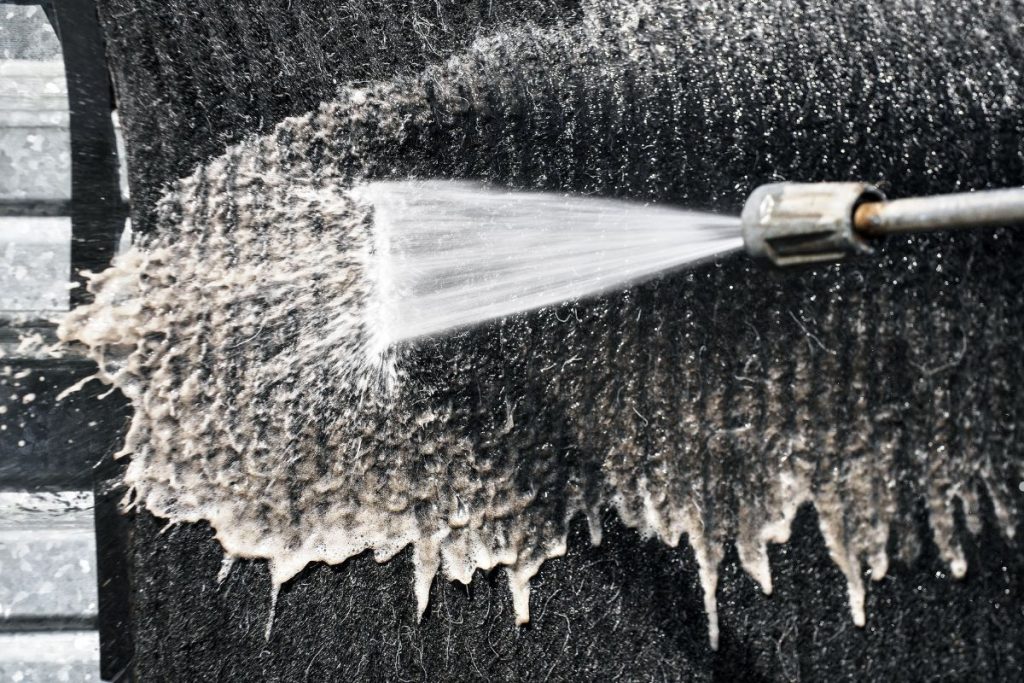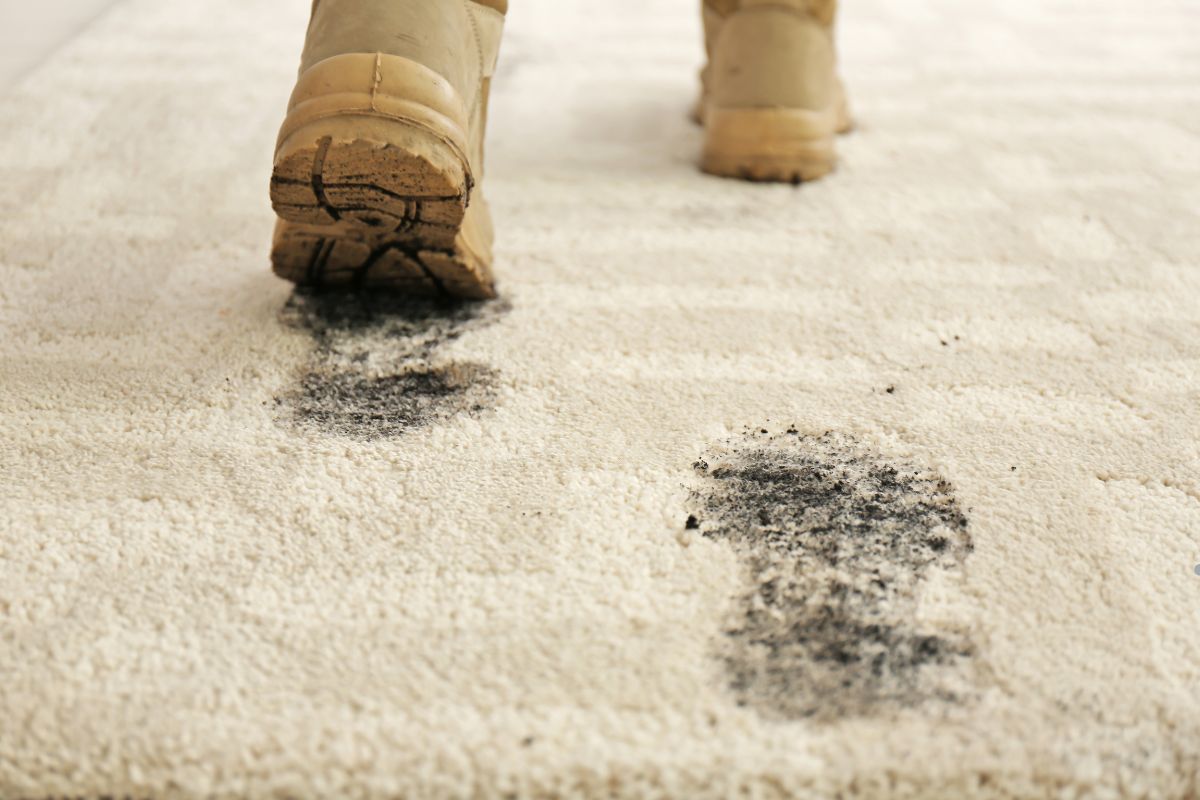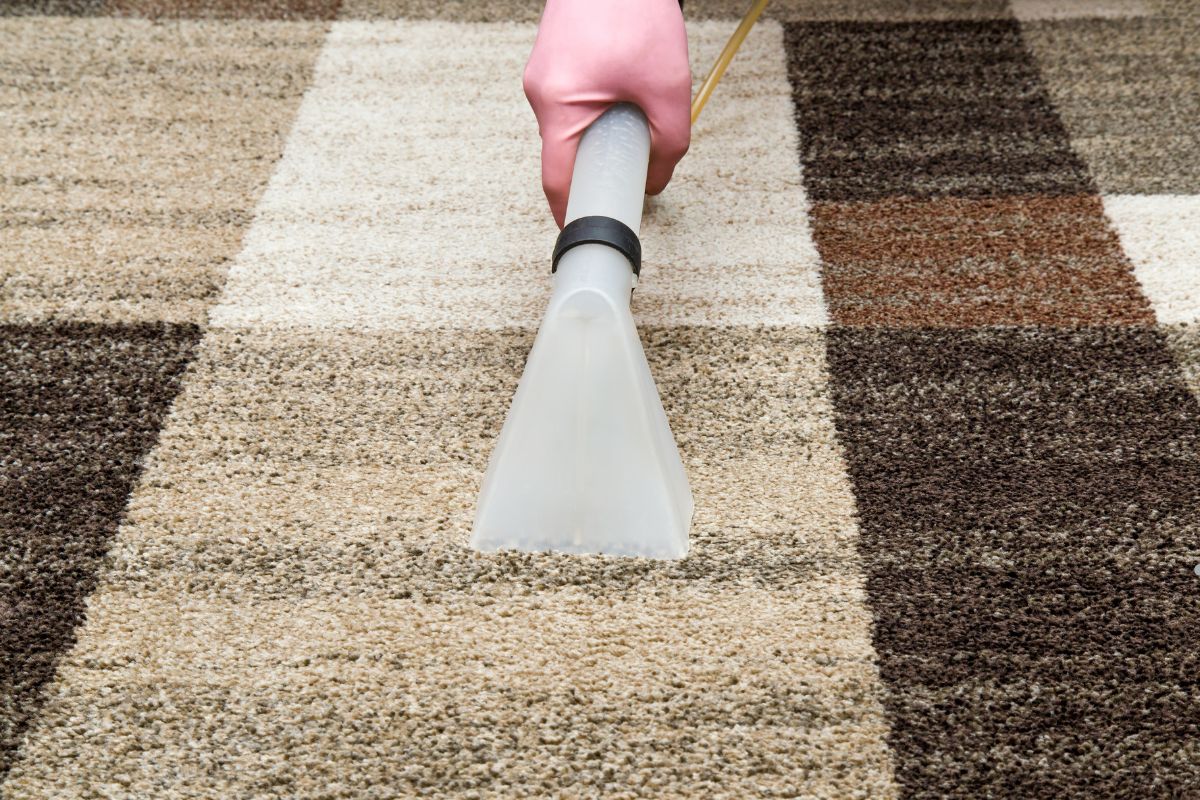
Seeing your carpet turn black can be alarming! The short answer is: it’s usually due to a combination of accumulated dirt and grime, filtration soiling (airborne pollutants trapped in carpet fibers), mold/mildew growth from moisture, or even issues with the carpet padding underneath. Let’s dive deeper into understanding these causes and how to fix them.
The Common Causes of Carpet Blackening
Carpet blackening is a common and frustrating issue for homeowners. While it may look like ordinary dirt, the root causes are often more complicated. Let’s uncover the main culprits. Trust our service to restore your carpets to their original freshness!

Soiling and Embedded Dirt
The most obvious cause of carpet blackening is the accumulation of everyday dirt, dust, and grime. Over time, foot traffic grinds these particles deep into the carpet fibers, causing them to appear darker and duller. This is especially noticeable in high-traffic areas like hallways and entryways. Regular vacuuming is key, but even the best vacuums can’t always remove deeply embedded dirt.Consider professional cleaning to extract this stubborn grime.
Filtration Soiling: The Silent Offender
Filtration soiling is a sneaky culprit that often goes unnoticed. It occurs when air currents carry fine particles of dust, soot, and pollutants through gaps around baseboards, under doors, and along walls. These particles act like a filter, leaving dark, unsightly lines on your carpet edges. If you notice this issue, improving your home’s air filtration can help prevent it.
Mold and Mildew Growth
Moisture is a breeding ground for mold and mildew. Leaks, spills, and high humidity can create the perfect environment for these fungi to thrive in your carpet. Mold and mildew not only cause dark stains but also pose potential health risks. Addressing leaks promptly and using a dehumidifier can help prevent this. For severe mold issues, it’s crucial to seek professional mold remediation .
Padding Problems: The Hidden Cause
What’s underneath your carpet matters! Old or deteriorating carpet padding can break down and release dust and fibers that migrate to the surface, contributing to blackening. In some cases, the padding itself can harbor mold or mildew, which then affects the carpet above.
Replacing old carpet padding can often make a significant difference in carpet appearance and longevity.
carpets can harbor germs, making them a breeding ground for bacteria, viruses, mold, and allergens. Their fibers trap unwanted contaminants that can impact your home’s hygiene. The good news? With proper cleaning and maintenance, you can significantly reduce germs and create a healthier living space. Let’s explore Carpets & Germs – What You Need to Know
Identifying the Problem: Is it Dirt, Mold, or Something Else?
Understanding the different causes of carpet blackening is crucial for selecting the right cleaning solution. General dirt and grime tend to create an overall dull or darkened appearance, while filtration soiling appears as dark lines along baseboards and edges. Mold, on the other hand, often has a musty odor and a fuzzy or blotchy texture, indicating potential moisture issues. Identifying the source of blackening can help prevent further damage and ensure effective treatment. If you’re unsure about the cause, it’s always best to seek expert advice. Call us today for professional carpet inspection and cleaning!
Solutions and Prevention: How to Fix and Prevent Carpet Blackening
The good news is that carpet blackening can often be fixed or prevented. The approach depends on the underlying cause, but here’s an overview of the options:

DIY Cleaning Methods
For general soiling, regular vacuuming is essential. Spot treatments can address localized stains. For deeper cleaning, consider renting a carpet cleaning machine or using a specialized carpet cleaning solution. Always test cleaning solutions in an inconspicuous area first to ensure they don’t damage the carpet. Remember to allow the carpet to dry thoroughly to prevent mold growth. For tough stains, you might need to use a professional carpet cleaner to remove them.
When to Call a Professional
Professional carpet cleaning is recommended for severe soiling, filtration soiling, mold removal, or when DIY methods are ineffective. Professionals have the equipment and expertise to deep clean carpets, remove stubborn stains, and address mold issues safely and effectively. They can also identify underlying problems that you might miss.
Preventing Future Blackening
Prevention is key to keeping your carpets clean and healthy. Here are some practical tips:
- Vacuum regularly (at least twice a week in high-traffic areas).
- Use doormats to trap dirt before it enters your home.
- Address spills and stains immediately.
- Improve ventilation to reduce humidity.
- Consider using a dehumidifier in damp environments.
- Schedule regular professional carpet cleaning.
Keeping your carpets clean and healthy starts with prevention. Regular maintenance helps extend their lifespan and ensures a fresher home environment. Vacuuming at least twice a week, especially in high-traffic areas, helps remove dirt and debris before they settle deep into the fibers. Using doormats at entry points can also minimize the amount of dirt tracked indoors. Promptly addressing spills and stains prevents permanent damage, while improving ventilation and using a dehumidifier in damp areas help reduce humidity and prevent mold growth. Most importantly, scheduling professional carpet cleaning ensures a deep and thorough clean, removing allergens and bacteria that regular vacuuming may miss. Call us today for expert carpet cleaning and a healthier home!
Frequently Asked Questions
How often should I professionally clean my carpets?
This depends on foot traffic and lifestyle. Generally, professional cleaning every 12-18 months is recommended.
Can I remove mold from my carpet myself?
Small areas of surface mold *might* be treatable with DIY solutions, but for larger infestations, professional mold remediation is crucial to prevent health problems.
What is the best way to remove filtration soiling?
Professional cleaning is usually the most effective way to remove filtration soiling, as it requires specialized equipment and techniques.
Keeping Your Carpet Clean and Healthy
Carpet blackening is a common problem with a variety of causes. By understanding these causes and taking preventative measures, you can keep your carpets clean, healthy, and looking their best for years to come. Regular cleaning, proper ventilation, and prompt attention to spills and stains are essential. And when in doubt, don’t hesitate to contact us a professional for expert assistance.

